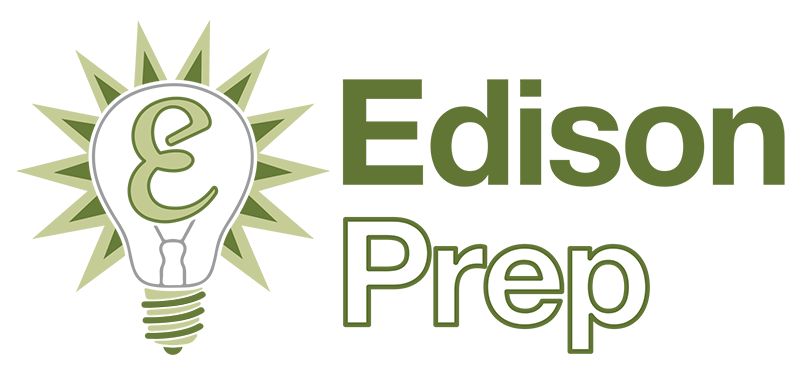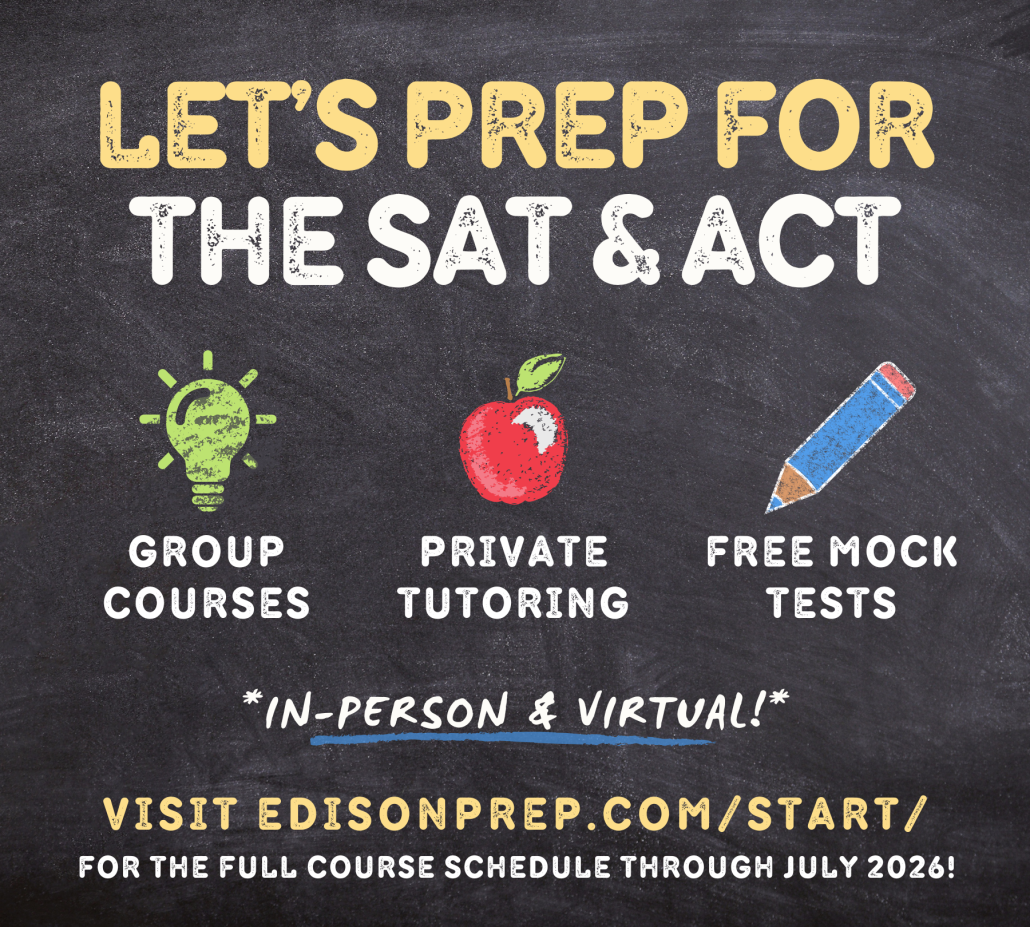Is the ACT Getting Harder?
By Brian Eufinger, Edison Prep Co-Founder
The upcoming ACT changes in Sept. 2025 have dominated the test prep news articles for the past months. The undiscussed changes to the ACT that have been subtly occurring since 2015 and are continuing with more vigor in 2025 are equally important.
Here is what you need to know:
1. The test has been steadily changing for the past 10 years: not revolution, but evolution.
Without any formal announcement by the ACT, the ACT has been slowly and steadily changing the difficulty level of its test. If you compare some of the prior released ACT tests from 2005-2012 vs. 2013-2018 vs. 2019 to present, the newer tests are noticeably harder to finish, especially in Math. Familiar formulas like those for matrix determinants or laws of sines are no longer provided to the student 100% of the time, and new items like Pascal’s Triangle and other novelties have become staples. Additionally, the hardest of the hard English questions (the “Rhetorical Skills” questions) have become more time-consuming and less clear-cut. I still take the test each year and wholeheartedly agree with most of our students’ perception of these subtle but very meaningful changes to the ACT.
The silver lining in these difficulty changes is that, on the whole, the score curves at the top have become more generous. For example, the June 2025 test allowed test-takers to miss 4 questions on math and still get a perfect 36, and minus 11 questions was still a top 1% 33 Math score! These are the most generous tests in 70 years….-4 and -11 would typically be 34 and 29 instead!
2. These new changes affect test-takers unequally.
These new test changes matter more for some test-takers than for others.
It depends on what part of the score spectrum your student is competing in. If your student is in the lower part of the score spectrum (1-24), these changes will have a more limited impact on your student’s score, since those shooting for a 25 or under can afford to have great accuracy on the easier ones that they get to and guess on dozens of questions that they can’t finish. For example, a student who got a 21 on all four sections on the December 2024 test was allowed to miss 94 of the 215 questions.
Generally speaking, the ACT often remains a far easier test on which to move from a bottom 1/3 score to an average score than the SAT. Lower-scoring students can pick off the easy questions, guess on the rest, and get to where they need to be. Many professionals abide by the “three digit rule” — if your student’s SAT score is three digits (under 1000), you should likely pursue the ACT.
3. The changes have greater impact on higher scorers.
However, for students looking for a top 12% or better score (28+), this timing change has had measurable impacts.
In a world where over 70% of our students plan on applying to the University of Georgia and/or Georgia Tech, which have average ACT scores for admitted students of 32 and 33.5, respectively, that makes this blog post very relevant and important. Running out of time on 4 or 5 questions per section would mean you’d have to ace the rest of the test to hit a 28+. If you’re shooting for a top 15-20% score or higher, leaving a bunch of questions blank is a killer.
4. How this impacts students aiming for tip-top scores (31+):
When our students see my wife Silvia and I at the testing center, many of them often joke with us, “I bet you guys probably finish each section with like 30 minutes left, right?” Nothing could be further from the truth, if you’re needing to check for accuracy and avoid careless mistakes.
I’m good at the test–I’ve earned back-to-back-to-back perfect 36s on the exam–yet the total time I had left at the end of all four sections combined was less than 90 seconds. I’m fast, but balancing speed and accuracy with these new, harder tests and novel topics doesn’t allow much time to spare.
The mental mindset we have described to many of our students shooting for 32+ is called “an upbeat, panicked scamper.” Overly Type A students who insist on doing all questions exactly in order will get a suboptimal score. On Math, Reading, and Science, I didn’t answer questions anywhere near the order in which they were asked.
I flip back and forth a fair bit to cherry-pick the easy ones, so much so that my proctor for a recent ACT pulled me aside during the break to ask me what I was doing. The chasm between how long the easy vs. the hard questions take is large. The seven hardest Science questions on last June’s test probably took me longer than the 18 easiest ones, and that’s fairly typical.
Many of our students who have tried this scamper method have initially seen it backfire because they don’t realize that they spent 18 seconds deciding whether to even do the question or not, which is far too long.
Students aiming for 32+ need to manufacture and hone a strong intuition as to which questions are worth doing immediately via large practice test volume. That spidey sense allows students to rapidly make a 2-3 second call as to whether to do the problem or come back later based on which types of questions have troubled them in the past.
The giant differences in the recommendations we’ve just described for various score levels of students illustrate the danger in listening to what a friend says about whether the SAT or ACT is easier. Why not simply take a mock test and find out?
Unless you have an uncommon gift of speed, going from a 32 towards a 36 is often a far tougher road than going from the equivalent SAT of a 2120 towards a 2400.
5. How East and West Coast overachievers have been impacting the ACT:
Part of our theory for why the ACT has been having to make the test harder is that the highest achievers in the highest-achieving areas of the country (the Northeast and California) are now taking the ACT in much greater numbers than before, and these areas have a disproportionate share of the top scores. When we first moved to Atlanta in 2007, we struggled to convince some New York transplants to give the ACT the equal standing it has long held with the SAT at all college admissions offices.
One mom (a recent Long Island transplant) had a son whose two diagnostic mock tests showed a top 45% score on the SAT but a top 5% score on the ACT…cold. We congratulated her and said, “Well, it looks like it’s the ACT for him!” She replied, “I will not pay money to have him tutored for that redneck test.” (???)
Things have changed these past 7 years. That conversation no longer takes place. Similar stories abound, including Nick Anderson’s 2013 article in the Washington Post where he states: “The word is out among students that either test is acceptable for college applications. That’s a big change from previous generations, when the SAT was perceived in many quarters as the premier –and therefore “must-do”–test.”
In Atlanta, we consider ourselves great motivators, and are able to get most of our students to complete one test a week, sometimes two. Our tutor friend in DC frequently has students apologize for only doing three tests leading up to a session. One only need look at the discussion forums on Reddit to see that our DC friend is not an anomaly. Doing just part of the ACT Red Book won’t suffice anymore.
6. Practice volume remains paramount at all score levels.
Under this new era of a harder ACT, more practice test volume has to happen. Students need to expect the test they’re going to receive on test day to be harder to complete than most of the practice tests, as the ACT gradually gets harder each month. Students shouldn’t be lulled into complacency by doing well on tests from a few years ago.
One important thing to do is to order the ACT My Answer Key (MAK) service if you happen to take the ACT in October, April, or June. With MAK, students can order a copy of the test booklet and answer key and have the chance to go over the exact questions they missed before taking it the next time.
If students were all given unlimited time on the test, 200-300% as many students might get a 30+. Each question is typically worth an entire point on the Reading and Science sections, so having to guess on 5 or more questions at the end is an instant 4-point hit to that section’s score. In this new era with the test being harder to finish (albeit with a gentler curve), practice volume is everything.
Bottom Line:
It is important to note that, even with fantastic tutoring on this an intellectually harder ACT, there will remain a meaningful minority of students who stand no real chance of finishing all four sections of the ACT on time (while maintaining accuracy/not rushing). Finding out whether your student is one of these people upfront at the beginning of tutoring, via a mock test, is critical.
Feel free to email us with questions at edison@edisonprep.com!








